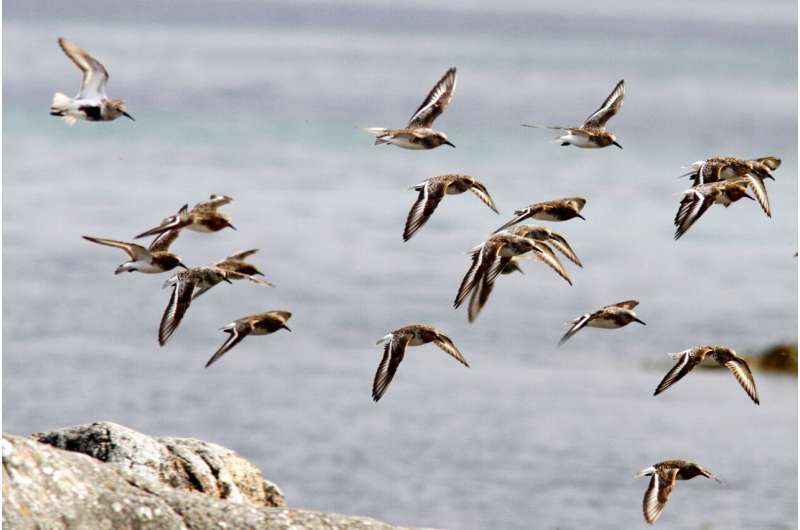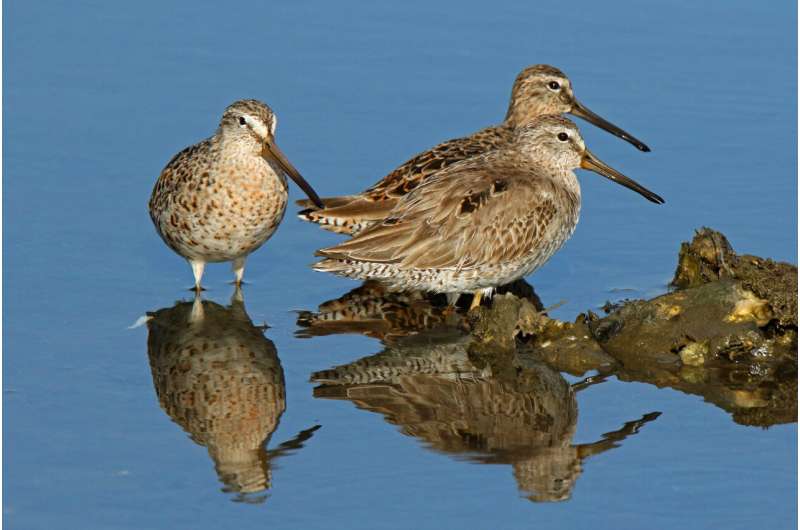On the image, sanderlings (Calidris alba) and one dunlin (Calidris alpina). The decline of shorebirds is a global phenomenon for which the causes are not yet fully understood. Credit: Paul F. Donald.
Over a half of all shorebird populations—sandpipers, plovers, avocets, oystercatchers, among others—are currently declining, according to scientific publications and reports of several Environmental NGOs, such as BirdLife International. The decline of shorebirds is a global phenomenon for which the causes are not yet fully understood.
A team of researchers of the Faculty of Sciences of the University of Lisbon (Ciências ULisboa) quantified for the first time global environmental changes that may help understanding the declines of shorebirds. Using products of remote sensing, the team quantified habitat changes in 907 Important Bird and Biodiversity Areas (IBAs) relevant for non-breeding shorebirds over the last two decades.
The researchers focused on changes in intertidal feeding areas used by shorebirds during the low tide, as well as high tide roosting areas. The results are now published in Science of The Total Environment.
Global changes were particularly significant at roosting areas, where there have been a propagation of vegetation and the expansion of urban infrastructures. Feeding areas changed dramatically in the East Asian—Australasian Flyway due to land reclamation for urban and industrial uses, and the development of aquaculture.
The study stresses that these changes may be critical for the conservation of shorebirds, in particular to some species of the East Asian—Australasian Flyway that are facing population collapses due to habitat loss.
On the image, short-billed dowitchers (Limnodromus griseus). Over a half of all shorebird populations - sandpipers, plovers, avocets, oystercatchers, among others - are currently declining, according to scientific publications and reports of several Environmental NGOs, such as BirdLife International. Credit: Paul F. Donald.
"This global approach is a step forward to understand the causes of shorebird declines, a group of birds that is already threatened", states Carlos David Santos, leading author of this study, researcher at Ciências ULisboa. "Many species of this group are long-distance migrants, some moving more than 20,000 km annually, thus they can be affected by environmental changes occurring at different regions of the world—this is why a global analysis of such changes was so important", adds the researcher.
More information: Carlos D. Santos et al, Global changes in coastal wetlands of importance for non-breeding shorebirds, Science of The Total Environment (2022). DOI: 10.1016/j.scitotenv.2022.159707
Journal information: Science of the Total Environment
Provided by University of Lisbon

























